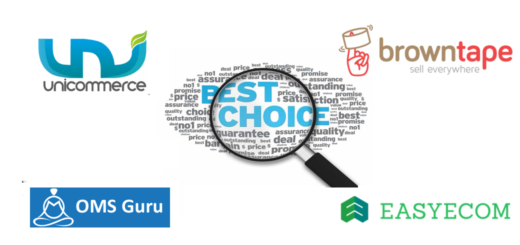Indian e-commerce Future . What to expect and How to grow.

What does the Indian e-commerce future hold.
The e-commerce industry had seen lots of ups and downs this year. Marketplaces like Amazon and Flipkart witnessed a three fold increase in sales during the festive sales. Websites like Snapdeal could not change their image even after revamping their logo and spending huge on advertising. In April e-commerce wings were clipped by DIPP restricting discounts offered by them. Whereas in October a committee was formed by the government to sort out issues related to e-commerce.
For sellers this year was a mixed one. We had seen an unprecedented growth in the number of sellers on various marketplaces. Existing sellers were trouble with Geographical tagging, Product returns, ever changing policies and a lot more. Sellers did see a growth but it was not as huge compare to last year when discounts and sales were pouring from various marketplaces.
Majority of the marketplaces are collaborating with big sellers in order to get over the rules enforced by DIPP. Amazon has cloudtail and Flipkart WS Retail.
With every changing policies and cash crunch being faced by Marketplaces, sellers are being wrongly charged and they are losing huge sum of money. Account suspensions with valid/invalid reasons have become norm of the day. Ever increasing issues have left sellers in a lurch, leaving them in a dilemma whether e-commerce is sustainable in the long run.
So what can e-commerce sellers look forward to
NEW MARKETPLACES
This year we have seen the launch of abof.com, ajio.com and tatacliq.com. With three biggest names in Indian industry (TATA, Birla and Reliance) stepping into e-commerce has raised the hopes of sellers. Currently all three offer their own brands. TataCliq has already started on boarding sellers and slowly launching individual categories one by one. Rather than going aggressively on discounts these marketplaces are concentrating on luring buyers with quality products and offering a different experience of buying.
We also witnessed companies like alibaba and rakuten opening offices in India. There were many news circulated of these companies launching there own e-commerce sites with the existing marketplaces but nothing has been confirmed till date. Walmart that had recently acquired jet.com also had shown interest in Indian e-commerce through a tie-up with Flipkart, this also has not been confirmed.
EXPORTS
The other avenue being offered is selling products on International Marketplaces. Amazon has added 12000 sellers from India to their Global selling platform. Through this platform sellers from India can list their products on Amazon’s website across the globe. Amazon has strong hold in North America, Europe and Japan, giving sellers an opportunity to showcase and sell their products across 50+ countries. Amazon has been conducting seller meets and webinars to help seller understand the process of selling and sending goods through it’s global network.
Ebay has also been offering similar services. Though Ebay does not have such strong presence but their foothold in US is good. Many sellers have been selling on Ebay.com for more than 10 years.
Indian sellers have started exploring opportunities outside India and have started exporting to Australia, Singapore, Malaysia and many other countries.
With government providing it’s timely support to e-commerce exports, sellers have been presented a beautiful opportunity to grow. The Export policy 2015-20 added e-commerce in it’s list of channels for export where sellers can claim benefits under MEIS scheme. Also with the introduction of Form 5 sellers will no longer need to send their products as samples and can mark them as e-commerce exports.
OWN WEBSITES
Apart from marketplaces there have been very few sellers who have had success through their own websites. Sites like utsavfashion.in, nykaa.com, cbazar.com have been able to grow big without the need of marketplaces.
With the right amount of effort and investments sellers can make their website a success thus eliminating the dependency on Marketplaces.
CONCLUSION
E-commerce in India is just at it’s nascent stage. It’s predicted that by 2020 it will generate $100 billion retail revenue. It’s a wait and watch game.
Do you wish to submit an article. Please fill our contact form here



Latest Comments